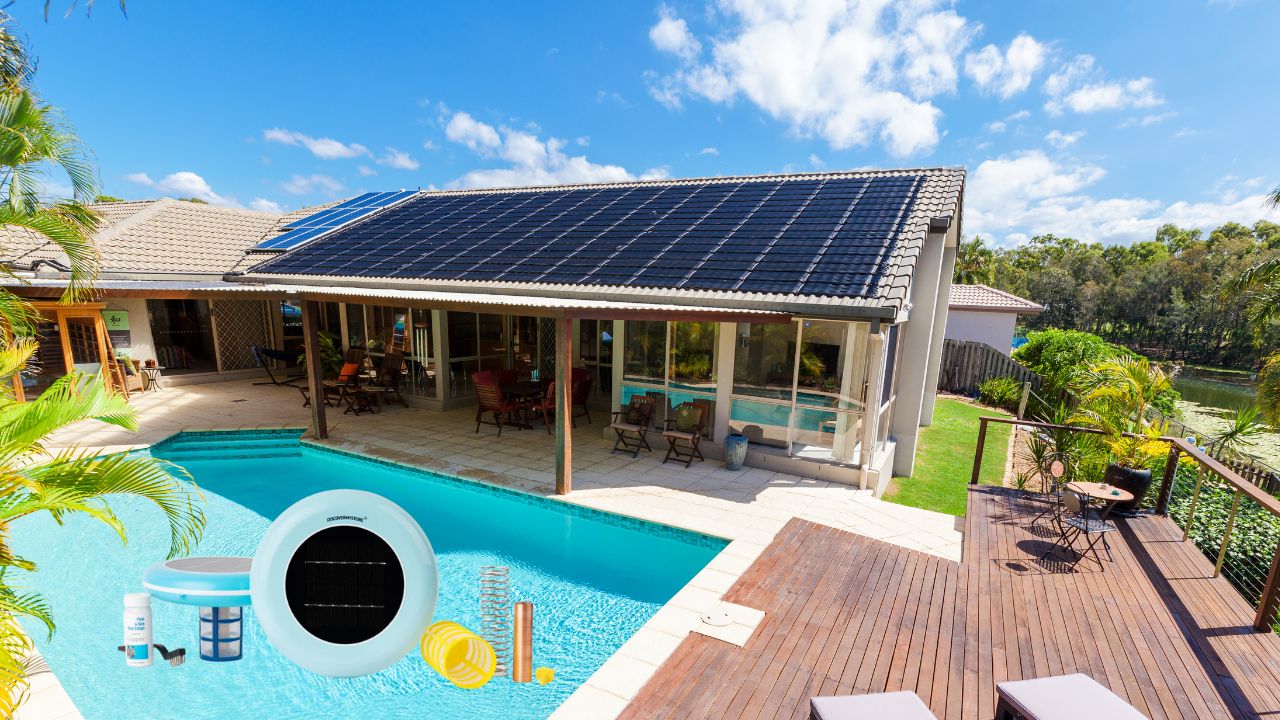Swimming Pool Copper Ionization: A Comprehensive Guide

Swimming Pool Copper Ionization are a source of joy and relaxation for many, but maintaining their cleanliness and chemical balance can be challenging. Traditional chlorine systems have long been the standard for pool sanitation, but innovative technologies like copper ionization are gaining popularity. This article will explore what copper swimming pool ionizer is, its benefits, how it works, and how to integrate it into your pool maintenance routine.
What is Copper Ionization?
Copper ionization is a water treatment method that uses copper ions to purify swimming pool water. The process involves an ionizer, which releases controlled amounts of copper ions into the water. These ions possess natural antibacterial and algicidal properties, effectively preventing the growth of bacteria and algae without the harshness of chlorine.
How Does Copper Ionization Work?
-
Ion Generation: A copper ionization system typically consists of a power supply connected to a copper electrode. When the system is activated, an electric current passes through the electrode, releasing copper ions into the water.
-
Ion Distribution: The copper ions are evenly distributed throughout the pool water, where they work to inhibit the growth of microorganisms. The ions attach to the bacteria and algae, disrupting their cellular functions and ultimately leading to their destruction.
-
Continuous Process: As the copper ions are consumed in the sanitization process, the system continuously replenishes them, ensuring ongoing protection against contaminants.
Benefits of Copper Ionization
1. Reduced Chemical Usage
One of the main advantages of copper ionization is the significant reduction in the need for traditional chemical sanitizers like chlorine. This not only lowers chemical costs but also minimizes the harsh chemical exposure for swimmers.
2. Improved Water Quality
Copper ionization helps maintain crystal-clear water with fewer impurities. Users often report that the water feels softer and is less irritating to the skin and eyes, making swimming a more enjoyable experience.
3. Algae Control
Copper ions are particularly effective against algae growth, preventing the formation of unsightly green and black algae blooms. This leads to reduced maintenance efforts and keeps the pool looking pristine.
4. Environmental Benefits
With less reliance on chemical sanitizers, copper ionization is a more environmentally friendly option. It decreases the chemical runoff that can affect local water systems, making it a sustainable choice for pool owners.
5. Longevity of Pool Equipment
By reducing the overall chemical load in the pool, copper ionization can help extend the lifespan of pool equipment. Chlorine can be corrosive to certain materials, but copper ionization presents a gentler alternative.
Installation and Maintenance of Copper Ionization Systems
Choosing the Right System
When selecting a copper ionization system, consider the following factors:
-
Pool Size: Ensure the system is rated for the size of your pool. Larger pools may require more powerful units or multiple systems.
-
Water Quality: Assess your pool's current water quality. If you have high levels of hardness or other chemicals, you may need a specialized system.
-
Compatibility: Make sure the system is compatible with any existing pool sanitation equipment you have.
Installation Process
-
Positioning the Ionizer: Install the copper ionizer near the pool's filtration system to ensure proper circulation of treated water.
-
Wiring and Setup: Connect the ionizer to a power source following the manufacturer’s instructions. Most systems require simple electrical connections.
-
Electrode Placement: Insert the copper electrode into the ionizer. This will be the component that generates the copper ions when the system is activated.
-
Initial Calibration: After installation, you may need to calibrate the system to ensure the right concentration of copper ions is being released into the water.
Routine Maintenance
-
Monitor Copper Levels: Use a water testing kit to regularly check the copper levels in your pool. Ideal levels are typically between 0.5 and 1.0 parts per million (ppm).
-
Electrode Cleaning: Over time, mineral buildup can affect the efficiency of the copper electrode. Regularly clean the electrode as recommended by the manufacturer.
-
Regular Testing: Besides copper, regularly test for pH, alkalinity, and other chemical levels to maintain a balanced pool environment.
-
System Inspection: Periodically inspect the ionizer for any signs of wear or malfunction, ensuring all components are functioning optimally.
Potential Drawbacks
While copper ionization has many benefits, it’s important to be aware of potential drawbacks:
1. Staining
Excessive copper levels can lead to staining of pool surfaces or even swimmer’s hair. It’s crucial to maintain the proper balance to avoid this issue.
2. Initial Cost
The initial investment in a copper ionization system may be higher than traditional chlorination methods. However, long-term savings on chemicals can offset this cost.
3. Limited Effectiveness
Copper ionization is not a complete replacement for chlorine, especially in heavily used pools. A residual sanitizer may still be necessary, particularly during peak swimming seasons.
Conclusion
Copper ionization presents a compelling alternative to traditional swimming pool sanitation methods. With benefits like reduced chemical use, improved water quality, and effective algae control, it’s a worthy consideration for pool owners looking to enhance their swimming experience. As with any pool maintenance system, understanding how to properly install and maintain your copper ionization system is key to enjoying a clean and safe swimming environment.
Incorporating copper ionization into your pool maintenance routine can provide numerous advantages while contributing to a healthier and more enjoyable swimming experience. Whether you’re looking to reduce your chemical footprint or simply want a clearer, softer pool, copper ionization may be the solution you’ve been searching for.
